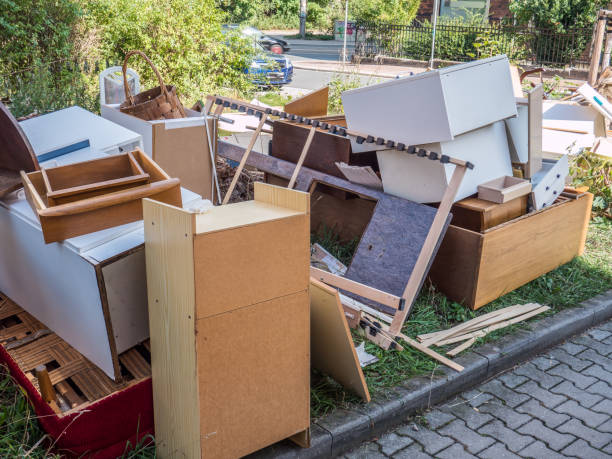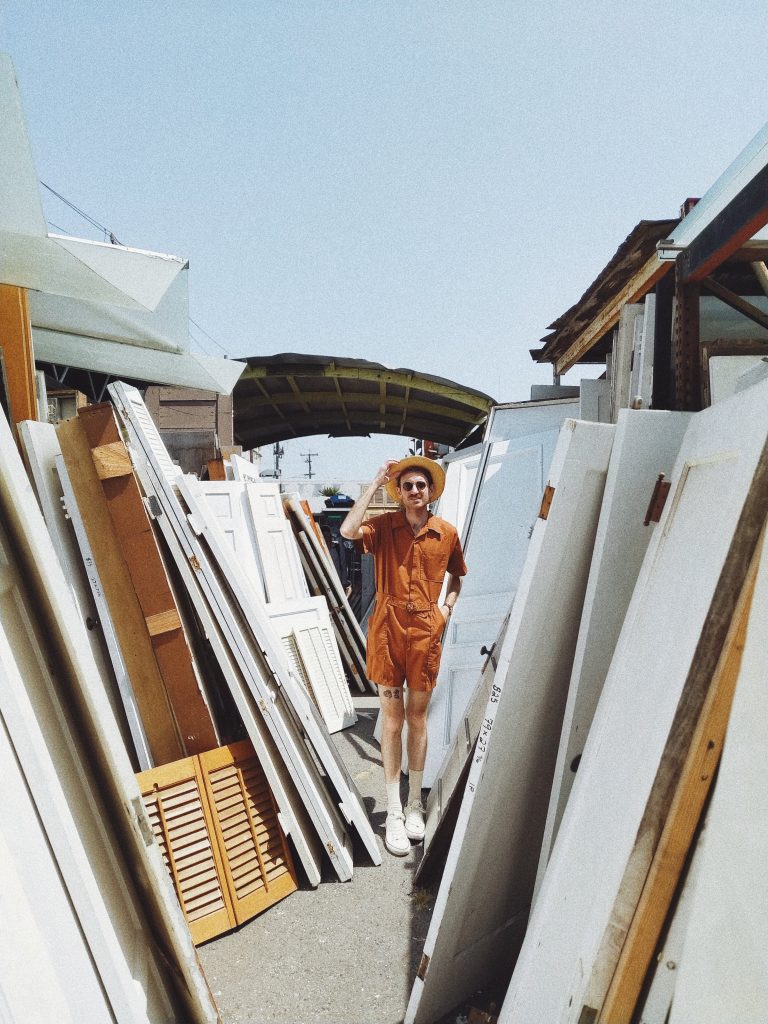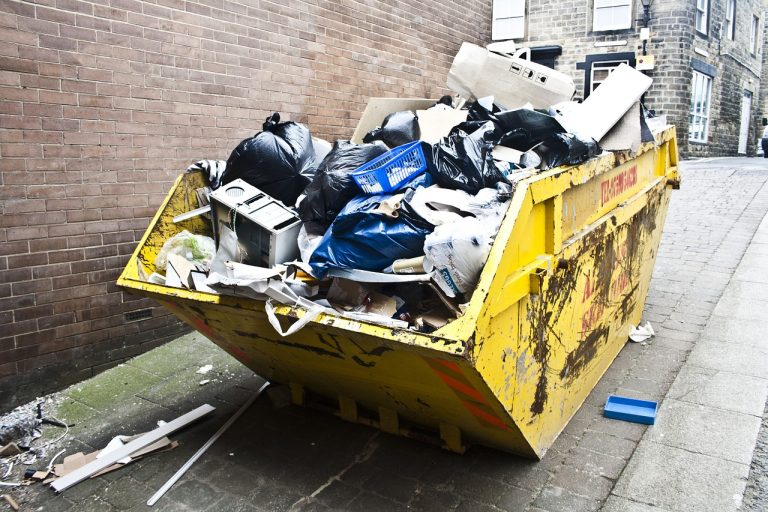How do I get rid of unwanted junk
Are you tired of clutter taking over your home and life? Do you find yourself constantly searching for ways to declutter and organise? Look no further, as in this article, we will explore simple and effective methods to get rid of unwanted junk and reclaim your space. Say goodbye to stress and hello to a clutter-free life.
What Is Unwanted Rubbish?
Unwanted rubbish refers to items that are no longer needed or desired, often considered waste or garbage. It can include things like old furniture, broken appliances, discarded packaging, or items that have reached the end of their useful life. Proper disposal of unwanted rubbish is essential to maintain a clean and healthy environment. Recycling, donating, or hiring professional junk removal services are some ways to responsibly get rid of unwanted rubbish.
In 2015, a man in London discovered a valuable painting while clearing out unwanted rubbish from his attic. The artwork turned out to be a lost masterpiece by the famous artist, Rembrandt. It was later sold at an auction for a staggering £35 million, becoming a remarkable example of the hidden treasures that can be found amidst unwanted rubbish.
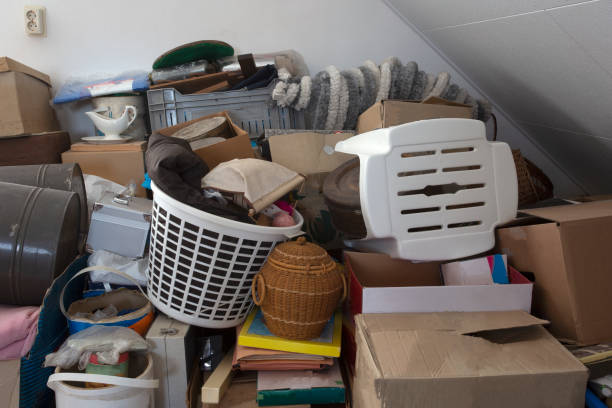
Why Do People Accumulate Unwanted Rubbish?
People collect unwanted rubbish for various reasons, which can be attributed to psychological, social, and environmental factors. Some common reasons include having sentimental attachment to items, fearing discarding something that might be useful in the future, excessive consumerism, and lack of awareness about sustainable waste management practices. Additionally, hoarding disorder can also contribute to the accumulation of unwanted rubbish. Understanding these underlying factors can help individuals address the root causes of their clutter and make informed decisions about decluttering and waste management.
The Collyer Brothers, Homer and Langley, were notorious hoarders from New York City. They gathered a huge amount of junk in their Harlem brownstone throughout the early 20th century. The brothers became reclusive and isolated themselves from the outside world. Tragically, their hoarding lifestyle led to their deaths when they were found deceased inside their home amidst piles of rubbish in 1947. This extreme case highlights the dangers and consequences of uncontrolled accumulation of unwanted rubbish.
What Are The Consequences Of Having Unwanted Rubbish?
Having unwanted rubbish can have various impacts on individuals and the environment. Firstly, it can make living spaces messy, causing stress and reducing productivity. Secondly, if rubbish is not disposed of correctly, it can attract pests and rodents, which can pose health risks. Thirdly, improper disposal can lead to pollution of soil, water, and air, contributing to environmental degradation. Lastly, the accumulation of rubbish in landfills leads to the depletion of valuable resources and contributes to climate change. Therefore, it is crucial to practice responsible waste management to minimize the consequences of unwanted rubbish.

How Can I Get Rid Of Unwanted Rubbish?
Dealing with unwanted junk can be a frustrating and overwhelming task. However, there are several options available to help you get rid of your unwanted rubbish. In this section, we will discuss various methods such as donating or selling items, recycling or repurposing items, hiring a rubbish removal service, and using a skip rental service. By the end, you will have a better understanding of the different options and can choose the best solution for your specific situation.
1. Donate or Sell Items
Donating or selling unwanted items can help declutter your space and benefit others. Follow these steps to donate or sell items:
- Assess: Determine which items are still in good condition and can be donated or sold.
- Research: Find local charities, thrift stores, or online platforms where you can donate or sell your items.
- Prepare: Clean and organise the items you want to donate or sell.
- Pricing: Set fair prices for items you want to sell, considering their condition and market value.
- Advertising: Advertise your items for sale on online platforms or local community bulletin boards.
- Schedule: Coordinate with charities or thrift stores to drop off your donated items, or arrange for pick-up services.
- Sell: Complete transactions with interested buyers, either in-person or online.
- Follow-up: Thank buyers or charities for their support, and keep a record of any donations made for tax purposes.
2. Recycle or Repurpose Items
Recycling or repurposing items is an excellent way to reduce waste and give unwanted items a new life. Here are some steps to follow:
- Sort items: Separate recyclable materials like paper, plastic, glass, and metal from non-recyclable ones.
- Check local recycling guidelines: Research what can be recycled in your area and how to prepare items for recycling.
- Prepare items for recycling: Clean and remove any non-recyclable parts or contaminants from the items.
- Find recycling facilities: Locate nearby recycling centres or drop-off points for specific items.
- Repurpose items: Get creative and find new uses for items that can’t be recycled, such as turning old jars into storage containers or using old clothes for DIY projects.
In the 1970s, recycling gained popularity as people became more aware of environmental issues. With increasing concerns about waste management and the depletion of natural resources, recycling efforts expanded worldwide. Today, recycling plays a crucial role in reducing pollution, conserving resources, and promoting sustainability. It has become an essential part of waste management systems globally, contributing to a cleaner and greener future.
3. Hire a Rubbish Removal Service
Hiring a waste removal service can make it much easier and more convenient to get rid of unwanted rubbish. Here are the steps to follow:
- Research and find a reputable waste removal service in your area.
- Contact the service and provide details about the type and amount of rubbish you need to dispose of.
- Schedule a date and time for the service to come and collect the rubbish.
- Prepare the rubbish by bagging or boxing it up, if necessary.
- Ensure that there is clear access to the rubbish for easy removal.
- On the scheduled day, wait for the waste removal team to arrive and handle the rest.
By hiring a waste removal service, you can save time and effort while ensuring that your unwanted rubbish is properly disposed of. It is a convenient solution for decluttering and maintaining a clean living space.
4. Use a Skip Rental Service
Using a skip rental service is an efficient and convenient way to get rid of unwanted rubbish. Here are the steps to follow:
- Contact a reputable skip rental company in your area.
- Determine the appropriate skip size based on the amount of rubbish you need to dispose of.
- Arrange for the skip to be delivered to your location.
- Load the skip with the unwanted rubbish, ensuring it is filled safely and within the skip’s capacity.
- Contact the skip rental company to schedule the pick-up.
- The skip will be collected, and the rubbish will be responsibly disposed of or recycled by the company.
True story: John had accumulated a significant amount of unwanted rubbish in his backyard over the years. He decided to use a skip rental service to clear it all out. With the help of a skip, John was able to quickly and easily remove the rubbish, allowing him to transform his backyard into a clean and clutter-free space.
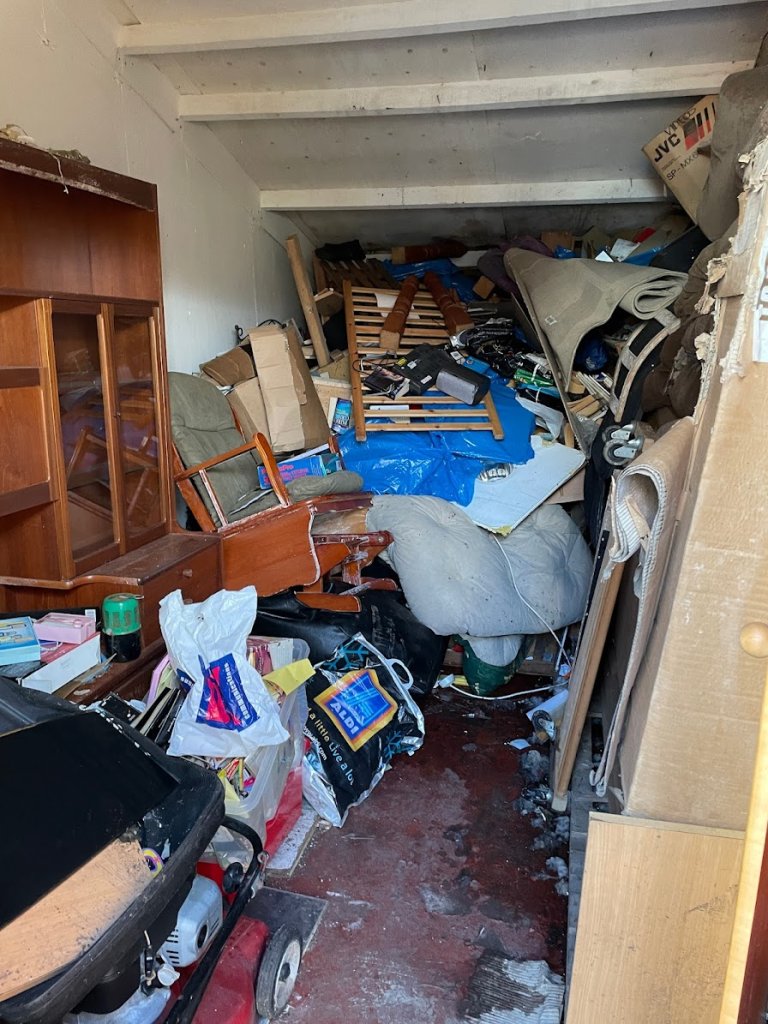
What Should I Consider Before Getting Rid Of Unwanted Rubbish?
Before you start clearing out your unwanted junk, it’s important to consider a few key factors to ensure a smooth and responsible disposal process. In this section, we will discuss the important considerations that should be taken into account before getting rid of any unwanted rubbish. From checking local regulations to planning for large items and considering the environmental impact, these tips will guide you towards a more efficient and mindful approach to decluttering.
1. Check Local Regulations
Before getting rid of unwanted rubbish, it is important to check local regulations to ensure proper disposal methods are followed. Here are some steps to consider:
- Research local waste management guidelines and regulations.
- Identify the specific requirements for disposing of different types of rubbish, such as hazardous materials or large items.
- Find out if there are any restrictions on disposal methods or designated collection days.
- Check if there are any recycling programs or facilities available in your area.
- Consider contacting your local council or waste management authority for further guidance.
Fact: In the UK, improper disposal of waste can result in fines or legal consequences. It is essential to be aware of and adhere to local regulations to protect the environment and avoid penalties.
2. Plan Ahead for Large Items
Planning ahead for large items is crucial when getting rid of unwanted rubbish. Follow these steps to ensure a smooth process:
- Assess the size and weight of the item to determine the best method of disposal.
- Research local regulations and guidelines for disposing of large items.
- Contact local charities or organisations to see if they accept donations of large items.
- If donating is not an option, consider selling the item online or through a car boot sale.
- If the item is not in good condition, explore recycling options for proper disposal.
- Arrange for a rubbish removal service or hire a skip rental company if necessary.
Remember to consider the environmental impact of your disposal method and choose the most sustainable option. By planning ahead, you can effectively get rid of large items and maintain a clutter-free space.
3. Consider the Environmental Impact
Considering the environmental impact is crucial when getting rid of unwanted rubbish. Here are some important steps to follow:
- Reduce waste: Minimise the amount of rubbish generated by opting for reusable items and buying products with minimal packaging.
- Reuse and repurpose: Extend the life of items by finding new uses for them or donating them to others who may need them.
- Recycle: Separate recyclable materials from non-recyclable waste and ensure they are properly recycled.
- Dispose responsibly: When disposing of rubbish, follow local regulations and guidelines to ensure proper disposal methods are used, avoiding harm to the environment.
- Consider composting: If you have organic waste, consider composting it instead of sending it to landfill, as it reduces methane emissions and produces nutrient-rich soil.
In 1969, Earth Day was founded as a way to educate and raise awareness about environmental issues. It has since become a global movement, reminding us all of the importance of considering the environmental impact of our actions and making sustainable choices to protect the planet for future generations.
What Are Some Tips For Maintaining A Clutter-Free Space?
Maintaining a clutter-free space is essential for a peaceful and organised life. But with our fast-paced lifestyles, it can be challenging to keep unwanted junk at bay. In this section, we will discuss some practical tips to help you maintain a clutter-free space. From regularly decluttering and organising to practising mindful consumption, we will cover various techniques to keep your space clutter-free. Additionally, we will also explore the importance of setting limits and boundaries to prevent clutter from accumulating in the first place.
1. Regularly Declutter and Organise
Regularly decluttering and organising your space is essential for maintaining a clutter-free environment. Here are some steps to help you:
- Start small: Begin with one area or room at a time to avoid feeling overwhelmed.
- Sort and categorise: Create separate piles for items you want to keep, donate, sell, or discard.
- Purge ruthlessly: Be honest with yourself about what you truly need and love, and let go of the rest.
- Create storage solutions: Invest in storage bins, shelves, and organisers to keep your belongings organised and easily accessible.
- Establish a routine: Set aside regular time each week or month to declutter and maintain your space.
True story: Sarah struggled with a cluttered home and constantly felt overwhelmed. By implementing a regular decluttering routine and organising system, she transformed her space into a peaceful and organised sanctuary, leading to increased productivity and a sense of calm.
2. Practice Mindful Consumption
To practice mindful consumption and reduce unwanted rubbish, follow these steps:
- Think before buying: Consider if you truly need the item and its potential lifespan.
- Research sustainable options: Look for products made from eco-friendly materials or with minimal packaging.
- Buy quality over quantity: Invest in long-lasting items that won’t need frequent replacement.
- Avoid impulse purchases: Take time to reflect on whether the item aligns with your values and needs.
- Choose second-hand: Opt for pre-loved items or participate in clothing swaps to extend their lifespan.
- Repair and repurpose: Fix broken items or find new uses for them to avoid unnecessary waste.
- Compost: Dispose of food waste responsibly by composting it instead of throwing it in the rubbish.
3. Set Limits and Boundaries
Setting limits and boundaries is crucial for maintaining a clutter-free space and avoiding the accumulation of unwanted rubbish. Here are some steps to help you establish and enforce these boundaries:
- Declutter regularly: Make it a habit to go through your belongings regularly and get rid of anything you no longer need or use.
- Define your space: Designate specific areas for different purposes and ensure that items are stored in their designated places.
- Establish rules: Set guidelines for what you bring into your space and establish limits for how much you can keep.
- Practice mindful consumption: Be conscious of your buying habits and only bring items into your space that you truly need or love.
- Set boundaries with others: Communicate your boundaries to family members or roommates to ensure everyone is on the same page.




